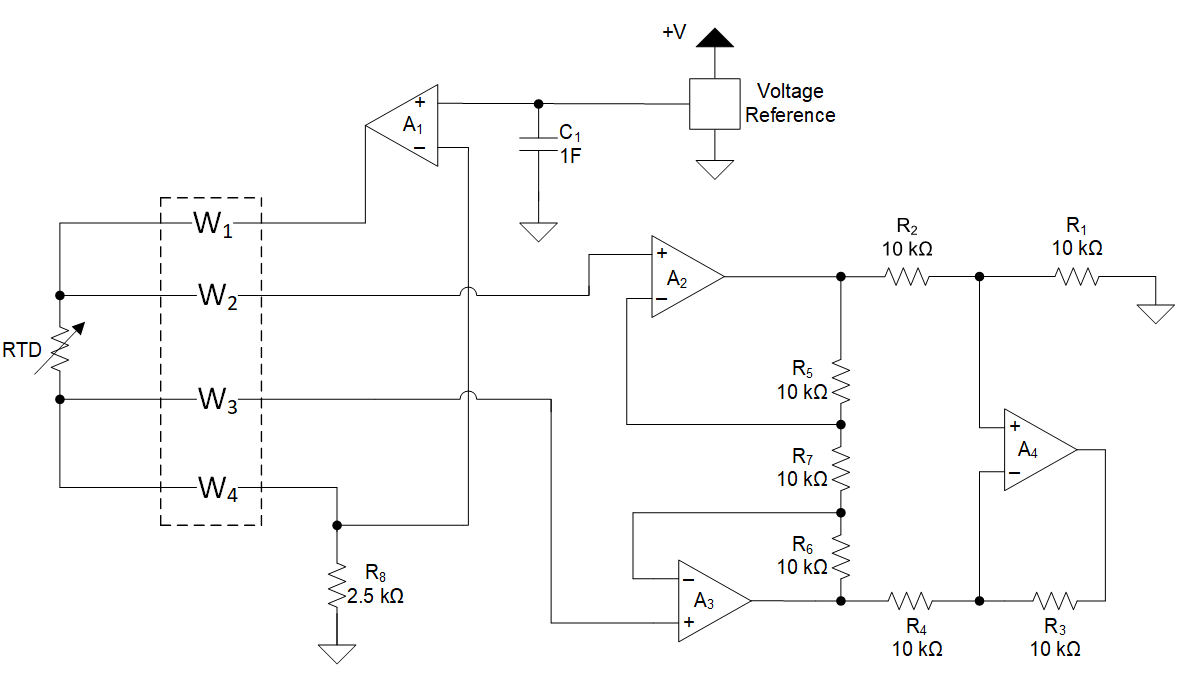SNOAA67A May 2021 – June 2022 TMP116 , TMP117 , TMP1826 , TMP61 , TMP63 , TMP64
1.3.1 Error Minimization Circuitry
The circuitry in Figure 1-5 is designed to take advantage of the four-wire RTD, which is the most accurate configuration to use. The two wires (W1 and W4) are the force leads and connect the RTD to the constant current source. The other two wires (W2 and W3) are the sense leads and connect voltage across the RTD to the amplifier. This arrangement separates the constant-current source driving the RTD from the measurement circuit. The voltage drop in wires W1 and W4 is removed from the measurement of the voltage across the RTD.
 Figure 1-5 Example of
RTD Error Minimization Circuitry .
Figure 1-5 Example of
RTD Error Minimization Circuitry .